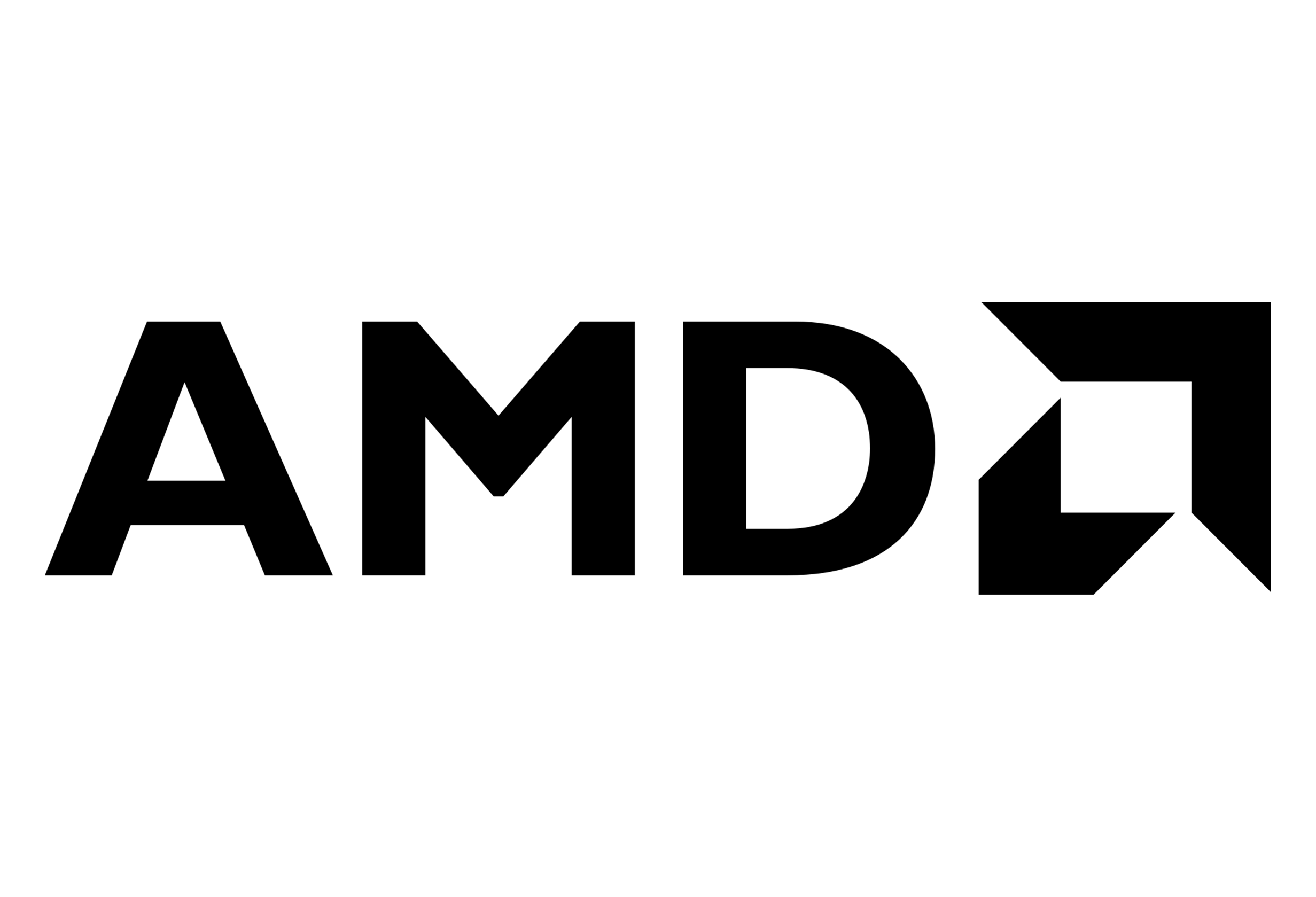— กราฟิกการ์ด AMD Radeon™ Pro VII ส่งมอบประสิทธิภาพการประมวลผลเพิ่มขึ้น 26% เมื่อนำไปเปรียบเทียบกับคู่แข่ง[1] ในการใช้งานกับซอฟต์แวร์ Blackmagic Design DaVinci Resolve และมีการปรับแต่งให้เข้ากับเวิร์คโหลด พัฒนาประสิทธิภาพการประมวลผลในการใช้งานแอปพลิเคชั่นที่มีความซับซ้อนอย่าง CAE simulation และ HPC —
— AMD Radeon™ Pro Software for Enterprise รุ่นใหม่ ส่งมอบประสิทธิภาพการทำงานที่เพิ่มขึ้นสำหรับกราฟิกการ์ด AMD Radeon™ Pro รุ่นปัจจุบัน พร้อมด้วยปลั๊กอินใหม่ที่เชื่อมต่อกับซอฟต์แวร์ Radeon™ ProRender ที่ผสานรวมเข้าไว้ใน SideFX® Houdini™ และ Unreal® Engine —
กรุงเทพฯ, ประเทศไทย – 14 พฤษภาคม 2563 – AMD (NASDAQ: AMD) ประกาศเปิดตัวกราฟิกการ์ดเวิร์คสเตชั่น AMD Radeon™ Pro VII สำหรับมืออาชีพด้านบรอดแคสต์ และงานวิศวกรรม นำเสนอกราฟิกและประสิทธิภาพการประมวลผลที่ยอดเยี่ยม รวมไปถึงฟีเจอร์ที่เป็นนวัตกรรม กราฟิกการ์ดรุ่นใหม่นี้ออกแบบมาเพื่อเพิ่มประสิทธิภาพการทำงานให้กับกลุ่มบรอดแคสต์ และสื่อต่างๆ การจำลองงานด้านวิศวกรรมผ่านคอมพิวเตอร์ (Computer Aided Engineering หรือ CAE) ที่มีความซับซ้อน และการพัฒนาแอปพลิเคชั่นการประมวลผลประสิทธิภาพสูง (High-Performance Computing หรือ HPC) ซึ่งนำมาให้ใช้ในงานด้านวิทยาศาสตร์บนซูเปอร์คอมพิวเตอร์ที่ขับเคลื่อนประสิทธิภาพการประมวลผลด้วยผลิตภัณฑ์ของ AMD
กราฟิกการ์ด AMD Radeon Pro VII นำเสนอหน่วยความจำรูปแบบ HBM2 (High Bandwidth Memory) ความเร็วสูงถึง 16GB และรองรับการแสดงผลแบบซิงโครไนซ์จำนวน 6 ช่อง และเชื่อมต่อเทคโนโลยี PCIe® 4.0 แบนด์วิดท์สูง มอบประสิทธิภาพการประมวลผลภาพความละเอียด 8K สูงขึ้นถึง 26 % ในการใช้งานแอปพลิเคชั่น Blackmagic Design DaVinci Resolve[1] และสูงขึ้นถึง 5.6 เท่าต่อประสิทธิภาพการประมวลผลในแบบ double precision ต่อดอลลาร์ เมื่อนำไปเปรียบเทียบกับคู่แข่ง[2] มาพร้อมด้วยเทคโนโลยี AMD Infinity Fabric™ Link[3] สำหรับตลาดกลุ่มเวิร์คสเตชั่น AMD Infinity Fabric Link จะเพิ่มความเร็วในการรับ-ส่งข้อมูลด้วยการเชื่อมต่อ การสื่อสาร GPU-to-GPU ความเร็วสูงทำงานในรูปสภาพการทำงานแบบ multi-GPU
กราฟิกการ์ดเวิร์คสเตชั่นรุ่นใหม่นี้ให้ประสิทธิภาพการประมวลผลขั้นสูง และฟีเจอร์ที่จะช่วยให้ทีมงาน ที่ดูแลขั้นตอนหลังการผลิตและผู้ผลิตเห็นภาพการประมวลผล การรีวิว และมีการสื่อสารปฎิสัมพันธ์กันได้ ด้วยความละเอียดระดับ 8K ไม่ว่าจะอยู่ ณ ห้องส่งสัญญาณ สตูดิโอ หรือในเซิร์ฟเวอร์จัดเก็บข้อมูล นอกจากนี้ ยังช่วยให้วิศวกร และนักวิเคราะห์ข้อมูลเชิงวิศวกรรมสามารถจัดการกับโมเดลการทำงาน และชุดข้อมูลที่มีขนาดใหญ่ และซับซ้อนได้มากขึ้น ในขณะเดียวกันก็ช่วยลดเวลาในการทำงานด้านการจำลองทางวิศวกรรม และเวิร์คโหลด การประมวลผลด้านวิทยาศาสตร์
Scott Herkelman รองประธานและผู้จัดการทั่วไปกลุ่ม Radeon Technologies บริษัท AMD กล่าวว่า “ปัจจุบันผู้เชี่ยวชาญในแต่ละสายงานต้องเผชิญกับแรงกดดันด้านเวลาภายใต้งบประมาณจำกัด ขณะเดียวกันก็มีเป้าหมายของการทำงานในระดับโลก ทำให้พวกเขาต้องการประสิทธิภาพของกราฟิกการ์ดที่มากขึ้น ซึ่งกราฟิกการ์ด AMD Radeon Pro VII สามารถตอบสนองความต้องการนั้นได้ ทั้งในด้านนวัตกรรมและเทคโนโลยีประสิทธิภาพสูง ช่วยให้ผู้ใช้สามารถจัดการงานได้สะดวกมากยิ่งขึ้น ทั้งในด้านการจำลองงานที่มีความซับซ้อน การสร้างและจัดการงานด้านดิจิทัลและคอนเทนต์สื่อประชาสัมพันธ์รูปแบบดิจิทัลที่มีความละเอียดสูง และการพัฒนาแอปพลิเคชั่นการประมวลผลประสิทธิภาพสูง (HPC) เพื่อผลักดันการค้นพบใหม่ๆ ทางวิทยาศาสตร์จากการนำซูเปอร์คอมพิวเตอร์ขนาดใหญ่เข้ามาใช้ในการประมวลผล”
ศักยภาพและฟีเจอร์ที่สำคัญในกราฟิกการ์ด AMD Radeon PRO VII ประกอบด้วย:
- เป็นผู้นำประสิทธิภาพการประมวลผลแบบ Double-Precision – ด้วยประสิทธิภาพการประมวลผลแบบ double-precision ที่สูงขึ้นถึง 5 TFLOPS (FP64) สำหรับเวิร์คโหลดด้านวิศวกรรม และวิทยาศาสตร์ กราฟิกการ์ด Radeon Pro VII ให้ประสิทธิภาพต่อดอลลาร์1 ที่มากถึง 5.6 เท่า เมื่อนำไปเปรียบเทียบกับคู่แข่งบนวิวเซ็ต AMD Internal Benchmark for Altair® EDEM “Screw Auger”
- หน่วยความจำความเร็วสูง – หน่วยความจำแบบ HBM2 (High Bandwidth Memory) ความเร็วสูงถึง 16GB พร้อมแบนด์วิดท์หน่วยความจำที่ 1TB/s และ เทคโนโลยี ECC แบบเต็มรูปแบบ สำหรับการจัดการโมเดลการทำงาน และชุดข้อมูลขนาดที่มีขนาดใหญ่และซับซ้อนได้อย่างลื่นไหล ด้วยความหน่วงที่ต่ำ
- AMD Infinity Fabric Link – ด้วยการเชื่อมต่อแบนด์วิดท์สูงและความหน่วงต่ำ จะช่วยให้การแชร์ หน่วยความจำระหว่างกราฟิกการ์ด AMD Radeon Pro VII สองตัวสามารถเพิ่มขนาด และปริมาณ ของเวิร์คโหลด ช่วยให้ผู้ใช้งานสามารถพัฒนาการออกแบบที่มีความซับซ้อนมากขึ้น และจำลองการประมวลผลที่ใหญ่ขึ้นได้ เพื่อผลักดันการค้นพบทางวิทยาศาสตร์ AMD Infinity Fabric Link ส่งมอบแบนด์วิดท์ที่สูงกว่าระบบ PCIe®0 x16 ถึง 5.25 เท่า ด้วยความเร็วในการส่งข้อมูล ที่สูงขึ้นถึง 168GB/s ในรูปแบบการเชื่อมต่อแลนไร้สายแบบ peer-to-peer ระหว่างกราฟิกการ์ด
- การทำงานระยะไกล – ผู้ใช้สามารถเข้าถึงการทำงานบนเวิร์คสเตชั่นจากที่ไหนก็ได้เพื่อประสิทธิภาพการทำงานที่ไร้ข้อจำกัดผ่านการทำงานแบบ IP เวิร์คสเตชั่นระยะไกลที่อยู่ภายในไดรเวอร์ AMD Radeon Pro Software for Enterprise[4]
- รองรับเทคโนโลยี PCIe 4.0 แบนด์วิดท์สูง – ระบบเทคโนโลยี PCIe 4.0 ให้แบนด์วิดท์มากกว่าระบบ PCIe 3.0 ถึงสองเท่า เพื่อประสิทธิภาพการทำงานที่ราบลื่นด้วยความละเอียดระดับ 8K การปฎิสัมพันธ์ด้านรูปภาพได้ในหลายๆ ช่องทาง
- ระบบ Frame Lock/Genlock – เชื่อมต่อการใช้งานเอาต์พุตรูปแบบซิงโครไนซ์ผ่านหน้าจอแสดงผล ป้ายดิจิทัล และอุปกรณ์การแสดงผลอื่นๆ ได้อย่างแม่นยำ (จำเป็นต้องใช้โมดูลการซิงโครไนซ์ด้วย AMD FirePro S400)
- รองรับการแสดงผลความละเอียดสูง และการแสดงผลแบบหลายหน้าจอ – รองรับการแสดงผลรูปแบบซิงโครไนซ์สูงขึ้น 6 เท่า, การแสดงผลของหน้าจอแบบ HDR เต็มรูปแบบในความละเอียดของภาพระดับ 8K (ด้วยจอแสดงผลเดียว) ผสมผสานกับการรองรับการเข้ารหัสและการถอดรหัสความเร็วสูงสำหรับการพัฒนาขั้นตอนการทำงานใน แบบมัลติสตรีม
- รับรองด้วยแอปพลิเคชั่นระดับมืออาชีพ – ได้รับการพัฒนาและรับรองประสิทธิภาพจากแอปพลิเคชั่นชั้นนำระดับมืออาชีพเพื่อความเสถียรและความ มั่นใจในการใช้งาน สามารถดูรายชื่อแอปพลิเคชั่นที่พัฒนาโดยผู้พัฒนาซอฟต์แวร์อิสระ (ISV) ที่ได้รับการรับรองจาก Radeon Pro Software เพิ่มเติมได้ที่นี่
- ซอฟต์แวร์โอเพนซอร์ส ROCm™ – แพลตฟอร์มซอฟต์แวร์โอเพนซอร์สสำหรับการประมวลผลความเร็วสูงที่ช่วยเรื่องความเรียบง่ายในโมเดลการวางโปรแกรมของกราฟิกการ์ด พร้อมด้วยการรองรับแอปพลิเคชั่น OpenMP, HIP และ OpenCL™ รวมไปถึงการรองรับเทคโนโลยีแมชชีนเลิร์นนิ่ง และการประมวลผลประสิทธิภาพสูงชั้นนำอย่าง TensorFlow™, PyTorch™, Kokkos, และ RAJA

ซอฟต์แวร์ AMD Radeon Pro Software for Enterprise ในไตรมาสที่ 2 ของปี 2563
กราฟิกการ์ดเวิร์คสเตชั่น AMD Radeon Pro ได้รับการสนับสนุนจากซอฟต์แวร์ Radeon Pro Software for Enterprise ส่งมอบประสิทธิภาพในระดับองค์กรในทุกด้าน ทั้งด้านเสถียรภาพ ประสิทธิภาพการทำงาน ความปลอดภัย คุณภาพของภาพการแสดงผลและฟีเจอร์ใหม่ๆ รวมไปถึง การจับภาพหน้าจอความละเอียดสูง การบันทึกและการสตรีมมิ่งวิดีโอ โดยในเวอร์ชั่นล่าสุดจะมอบประสิทธิภาพสูงขึ้นถึง 14 เปอร์เซ็นต์เมื่อนำไปเปรียบเทียบกับเวอร์ชั่นในไตรมาสเดียวกันของปีที่ผ่านมาสำหรับกราฟิกการ์ด AMD Radeon Pro รุ่นปัจจุบัน[5] โดยไดรเวอร์ซอฟต์แวร์เวอร์ชั่นใหม่พร้อมเปิดให้ดาวน์โหลดแล้ว สามารถเข้าไปดูรายละเอียดเพิ่มเติมได้ที่ AMD.com
การอัพเดตซอฟต์แวร์ AMD Rendering
AMD อัพเดตซอฟต์แวร์ AMD Radeon™ ProRender ซอฟต์แวร์ด้านการเรนเดอร์ที่สร้างขึ้นตามมาตรฐานของอุตสาหกรรม ช่วยเพิ่มประสิทธิภาพความรวดเร็วการเรนเดอร์บนกราฟิกการ์ดหรือโปรเซสเซอร์ และระบบปฎิบัติการต่างๆ[6] การอัพเดตครั้งนี้ประกอบด้วย ปลั๊กอินใหม่สำหรับแอปพลิเคชั่น SideFX® Houdini™ และ Unreal® Engine และการอัพเดตปลั๊กอินแอปพลิเคชั่น Autodesk® Maya® และ Blender® ในส่วนของนักพัฒนามีการอัพเดต AMD Radeon™ ProRender SDK ที่พร้อมให้บริการแล้วบนเว็บไซต์ที่ได้รับการออกแบบใหม่อย่าง GPUOopen.com และสามารถใช้งานสะดวกสบายมากขึ้นด้วย Apache License 2.0 โดย AMD เปิดตัวชุดพัฒนาซอฟต์แวร์ (SDK) รุ่นเบต้าออกมาสำหรับการทำงานด้านการเรนเดอร์รุ่นถัดไปในรุ่น Radeon ProRender 2.0 พร้อมด้วยประสิทธิภาพการทำงานที่เพิ่มขึ้นของโปรเซสเซอร์ และกราฟิกการ์ด และรองรับการเรนเดอร์ด้วยปลั๊กอินโอเพนซอร์ส
การวางจำหน่าย
กราฟิกการ์ด AMD Radeon PRO VII คาดว่าจะเริ่มวางจำหน่ายช่วงกลางเดือนมิถุนายน 2563 ผ่านทางร้านค้าออนไลน์ และตัวแทนจำหน่ายชั้นนำ ในราคา 1,899 เหรียญสหรัฐ และเวิร์คสเตชั่นที่ใช้ขุมพลังการประมวลผลด้วยกราฟิกการ์ด AMD Radeon Pro VII คาดว่าจะวางจำหน่ายในช่วงครึ่งหลังปี 2563 ผ่านตัวแทนผู้ผลิตชั้นนำ
Supporting Resources
- Learn more about AMD Radeon Pro VII graphics card
- Learn more about AMD Radeon Pro Software for Enterprise 20.Q2 here
- Learn more about AMD Radeon ProRender updates here
- Learn more about ROCm Open Ecosystem here
- Become a fan of AMD on Facebook
- Follow AMD on Twitter
- Follow Radeon™ Pro graphics on Twitter
[1] Testing as of April 02, 2020 by AMD Performance Labs on a production test system comprised of an Intel® Xeon® W-2125, 32GB HBM2 RAM, Windows® 10 Pro for Workstations, 64-bit, System BIOS 1.11.1, AMD Radeon™ Pro VII, AMD Radeon™ Software for Enterprise 20.Q2 Pre-release version/NVIDIA Quadro® RTX, NVIDIA Quadro® Optimal Driver for Enterprise (ODE) R440 U6 (442.5) using PugetBenchfor DaVinci ResolveStudiov. 0.6 Beta. PugetBench by Puget Systems. Results may vary. RPW-310
[2] Testing as of April 29, 2020 by AMD Performance Labs on a production test system comprised of an Intel® Xeon® W-2125, 32GB HBM2 RAM, Windows® 10 Pro for Workstations, 4096-bit, System BIOS 1.11.1, AMD Radeon™ Pro VII, AMD Radeon™ Pro Software for Enterprise 20.Q1/NVIDIA Quadro® RTX, NVIDIA Quadro® Optimal Driver for Enterprise (ODE) R440 U6 (442.5) using AMD Internal Benchmark for EDEM. RPW-320.
[3] AMD Infinity Fabric™ Link requires two Radeon Pro VII GPUs, a compatible bridge connector (either a two- or a three-slot bridge connector, both sold separately.), and Radeon Software for Enterprise driver 20.Q2 or later. Compatible software is currently limited to Radeon™ ProRender, but additional application compatibility is expected in future 3rd party software releases and are required to use the combined graphics memory of both cards. GD-169
[4] Compatible with AMD Radeon™ Pro WX 2100, 3100, 3200, 4100, 5100, 7100, 8200, 9100, and AMD Radeon™ Pro W5500, W5700, and VII GPUs. Remote Workstation functionality requires AMD Radeon™ Pro Software for Enterprise driver 18.Q4 or newer plus purchase and installation of Citrix Virtual Apps & Desktops™ or Microsoft® Remote Desktop Services. RPS-50
[5] AMD Radeon™ Pro Software for Enterprise 20.Q2 is up to 14% faster in the geomean of the SPECviewperf® 13 benchmark viewsets than AMD Radeon™ Pro Software for Enterprise 19.Q2 when using the Radeon™ Pro WX 4100 GPU. Testing conducted by AMD Performance Labs as of April 29, 2020, on a test system comprising of an Intel® Xeon® W-2125 4-core 4.50 GHz CPU, 32 GB RAM, Windows® 10 for Workstations 64-bit October 2018 Update, System BIOS 1.11.1 at default settings, Radeon™ Pro WX 4100, AMD Radeon™ Pro Software for Enterprise 20.Q2/AMD Radeon™ Pro Software for Enterprise 19.Q2. Benchmark Application: ran the SPECviewperf® 13 benchmark and then calculated the geomean of all viewsets (higher is better). AMD Radeon™ Pro Software for Enterprise 20.Q2: 41.84. AMD Radeon™ Pro Software for Enterprise 19.Q2: 36.86. Performance Differential: (41.84-36.86)/36.86*100 = ~13.51% better performance with AMD Radeon™ Pro Software for Enterprise 20.Q2 on the Radeon™ Pro WX 4100 graphics card. Scores are based on AMD internal lab measurements and may vary. PC manufacturers may vary configurations, yielding different results. Performance may vary based on use of latest drivers. SPEC®, SPECapc™, and SPECviewperf® are registered trademarks of the Standard Performance Evaluation Corporation. Additional information about the SPEC benchmarks can be found at www.spec.org/gwpg. RPS-125
[6] GPU or CPU support for OpenCL™ or Apple® Metal® required. Radeon™ ProRender supports Windows®, macOS®, and Linux®.
